► New McLaren 750S supercar revealed
► Radical 3-7-59 edition honours racing pedigree
► Just six of the special edition built
McLaren has announced a proper nod to its racing heritage with this: the 750S 3-7-59 edition. It’s a wild-looking art car that celebrates McLaren’s motorsport history.
The 3-7-59 edition is specifically designed to honour the motorsport ‘Triple Crown’ – i.e. the fact that McLaren has won the Indianapolis 500, the Formula One Monaco Grand Prix and the 24 Hours of Le Mans.
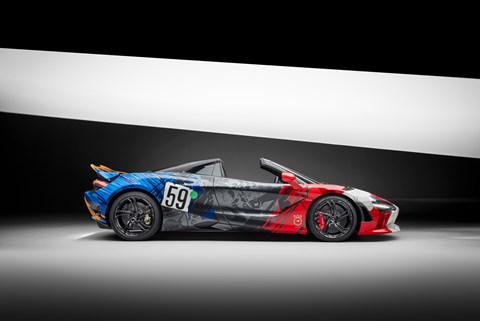
McLaren’s MSO division have created six rolling art cars to celebrate the wins, as part of the brand’s 60th anniversary celebrations in 2023. Each car is delicately designed and individually painted with individual nods to Johnny Rutherford’s number 3 Indy 500 winner of 1974, Alain Prost’s Monac-winning number 7 F1 car of 1984 and the 59 worn by the McLaren F1 GTR driven to a win at the 1995 Le Mans endurance race.
The paintwork takes the MSO team 1200 hours on each car, with 20 paint colours used in the design, and there are some neat details inside like a special key fob, bespoke upholstery and a ‘3759’ plaque on the door sills.
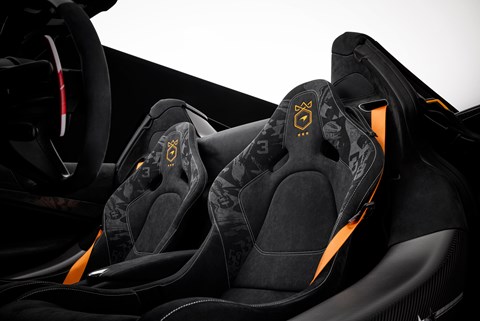
Naturally, only the most avid and rabid McLaren fans will be up for buying such a collectible. And six of those most avid McLaren fans have already bought the six that will be made.
Interested in a normal 750S? Read on.
McLaren 750S: the CAR debrief
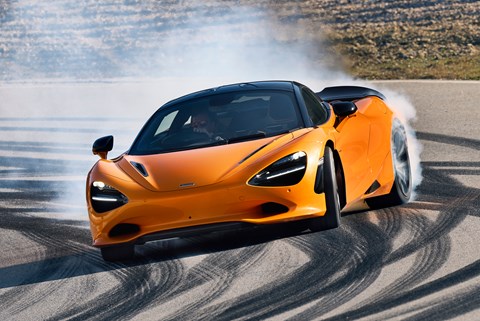
As you might expect from how it looks, this is very much a heavy update of the 720S that came before it. Even members of the McLaren team themselves admit that.
So, as you can probably tell, it’s all about marginal gains. Shane Harman, product planning manager at McLaren, guided CAR through the new 750S’s changes at the Goodwood Festival of Speed. ‘We identified three key areas that we wanted to really move the car on with. The first, as you imagine, is performance. Second was driver engagement – something where we think our competitors can sometimes do a better job than we can – and technology in the cabin.’
Harman goes on to say that, when you’re competing with the likes of Ferrari and Lamborghini, it helps to make your cars as fun as possible. Not that the 720S wasn’t fun at all, mind you.
It doesn’t look much different…
On the face of it, true – you’d struggle to notice. ‘30 per cent of components are new,’ says Harman, ‘but visually, yes, it absolutely is an evolution of the 720S.’
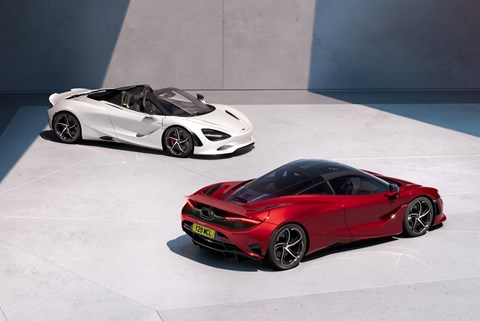
Look closely and spot the new and cleaner front bumper, new front splitter, narrower eye socket intakes, new rear wheel-arch vents, revised rear bumper, 20 percent bigger rear wing and new service compartment below the rear screen. ‘The ‘eye socket’ headlights shape can be in body colour, which can be a bit Marmite,’ says Harman, ‘but around 30 per cent of customers are speccing them.’
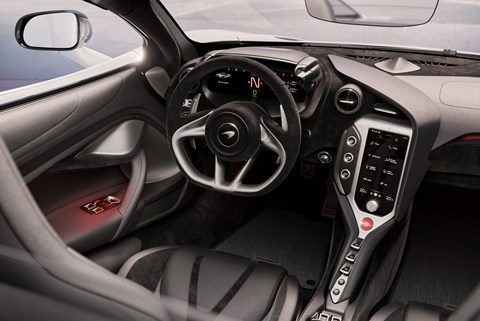
Inside, as with the Artura, rockers either side of the instrument binnacle control the Powertrain and Handling modes (they’ve migrated from the upper centre of the dash), and there’s a new MCL button – which effectively acts like an individual mode – that allows you to set your specific parameters and access them quickly. Apple CarPlay is included, too.
Is it quicker?
The headline numbers are a 30PS increase in power – from 720 to 750PS (thus the name) or from 710bhp to 740bhp. Power is increased by more turbo boost and lightweight pistons, borrowed from the 765LT. There’s also a new engine management system. As before, the 4.0-litre twin-turbo V8 uses a flat-plane crank and a dry sump. It revs to a heady 8500rpm.
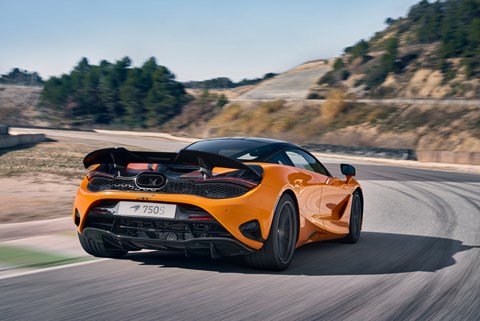
The greater power, and a 30kg weight shaving, means even better performance than the ultra-swift 720S: 0-62mph in 2.8 sec and 0-124mph in 7.2 sec. That’s also slightly brisker to 124mph (200 km/h) than its main Maranello rival, the 296 GTB. It’s a meaningless difference (just 0.1 sec) but in the performance race between McLaren and Ferrari it may matter to some braggadocio customers.
How is it more fun?
And in order to keep up with the Italians in the fun department, the 750S gains – faster steering, a shorter final drive ratio and a new brake booster to give more pedal feel and better modulation. Engine note has been improved by new engine mounts – designed to enhance the drama of the V8 at start-up and under hard acceleration – and by a new and lighter central exit stainless steel exhaust system, as on the P1 hypercar.
But the 750S is still a serious performance car, too. Downforce is improved, and the aerodynamic balance has also improved, supposedly making it easier to drive fast. ‘The splitter is extended over the 720S,’ says Harman, ‘and the new rear wing gives us a five per cent increase in downforce.’
The reduced weight, to 1389kg (DIN) is due to lighter carbon-shelled seats (even lighter racing seats are available), new 10-spoke forged alloy wheels, new springs and dampers, a lighter instrument display and even lighter (by 1.6kg) windscreen glass. It’s comfortably lighter than rival Ferraris and Lamborghinis (or than the McLaren Artura). As before, the carbon fibre monocoque provides enormous rigidity, great strength – and is the single most important component in the McLaren’s featherweight credentials.
And there’s a Spider?
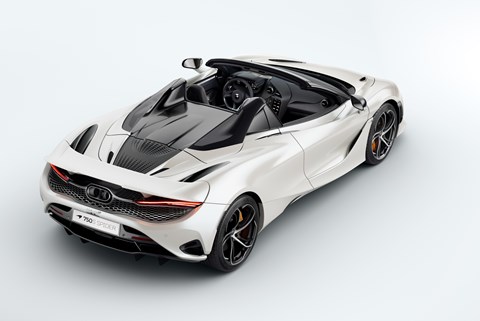
A new 750S Spider is also available, yes, using the familiar (and fast – just 11 seconds to open or close) Rectractable Hard Top (RHT). As before, there is only a marginal dip in performance over the coupé: just 0.1 sec slower to 124mph. Thank the minimal weight penalty for the convertible version – just 49kg heavier. That’s due to the marvels of the carbon monocoque chassis, which needs no beefing up for the necessary strength and rigidity.